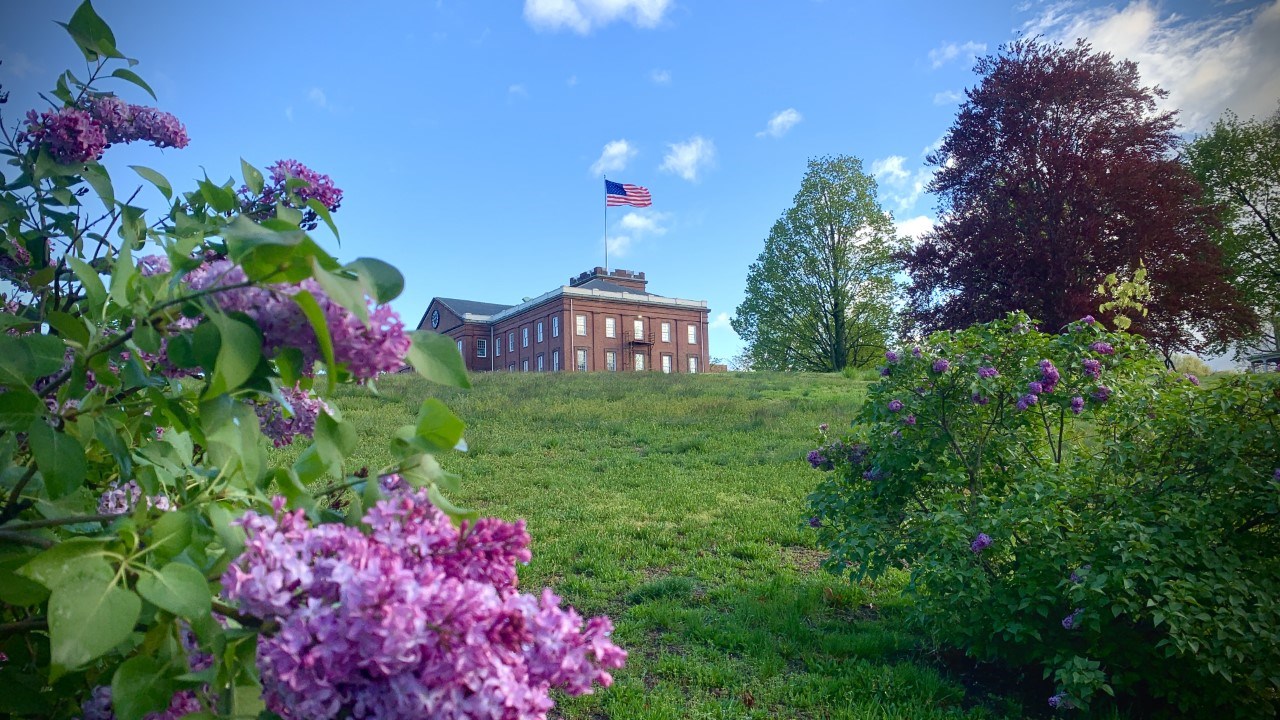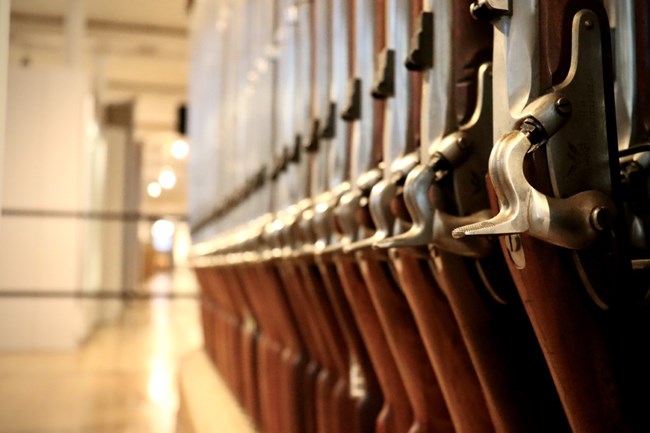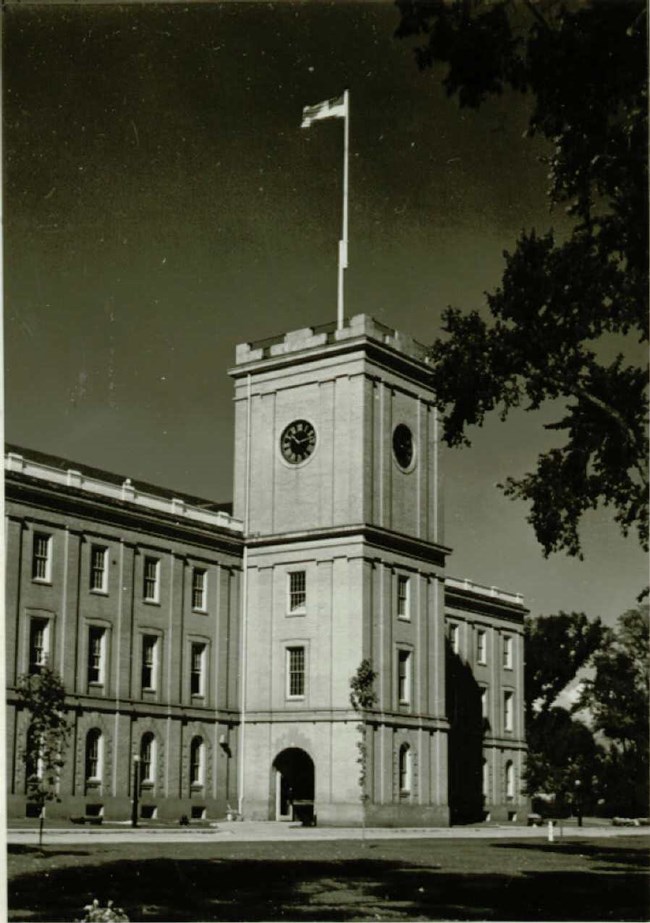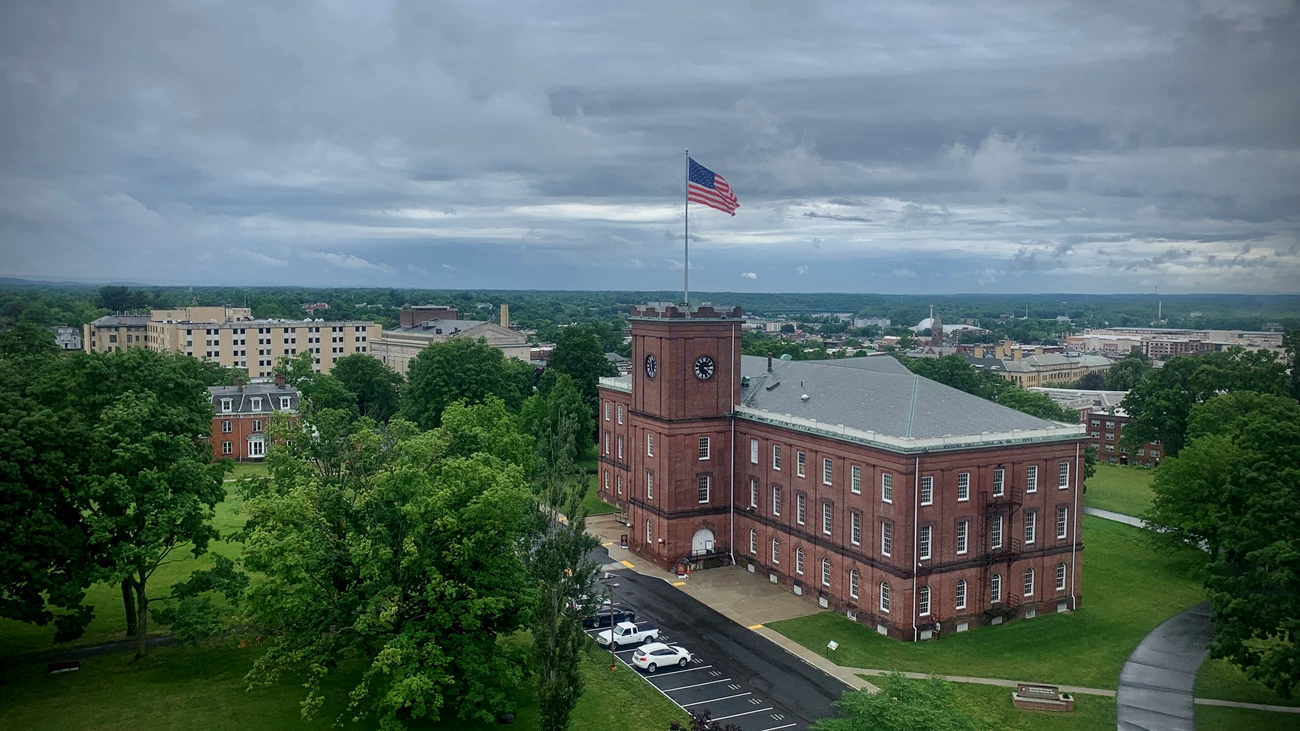
Photo Credit: NPS/Dani Beekman The dominating feature of Springfield Armory National Historic Site is the Main Arsenal (Building 13) with its clock tower and view of the Armory grounds. Springfield Armory was established in 1777 as a federal arsenal; as an arsenal, firearms that supplied the Continental Army during the American Revolution were stored here. After the Revolution, Springfield Arsenal was officially established as a federal armory where arms could be stored and produced. in 1794 under the authorization of George Washington. Harpers Ferry, our sister armory, was the second site selected for an armory. Early in the Civil War the arsenal and armory at Harpers Ferry were torched leaving Springfield Armory as the Nation’s only federal armory producing small arms for the Union. 
Photo Credit: NPS/Dani Beekman
Built to be centered between the Paymaster’s Residence and the Master Armorer's Residence, it was just askew from the walkway to the Administration building across the Green; Ripley planted trees to make the difference less obvious. Reflecting the power of the United States Military, it expressed an authoritarian and practical nature ensuring the building would command the Green and the Armory complex, as it does today.

Photo Credit: Springfield Armory NHS Archives Atop the 30-foot clock tower sits a 3 ½ foot bell cast in 1848 at Meneely’s Foundry in West Troy, New York. One is treated to sweeping views of the City of Springfield, the Berkshires and beyond from the clock tower. The Main Arsenal was a popular tourist destination prior to World War I. As long as the workers were not disturbed, visitors walked around the grounds and took in the sights before touring through the workshops during operating hours. They often went up the clock tower to see the view. The Main Arsenal has undergone many changes including painting of the brick exterior. The paint scheme at one point was salmon, then replaced with yellow orchid with brown trim; the paint was sandblasted off in 1937. During the first forty years, items were moved between floors using a hoist system in the tower, but a hydraulic elevator was installed in 1897; the current elevator was installed between 1940-1941. Electricity came to the building by 1906 and water as early as 1879, but perhaps even earlier as noted by some maps. It is likely that the building wasn’t heated until 1906 when a steam plant was installed at the Armory. The original plaster ceiling was later replaced with ornate pressed metal panels and during World War II restrooms were added for women. After the Armory closed in 1968, the Main Arsenal housed a television studio until 1980. In 1852, when Springfield was incorporated as a city, the Armory was included in the city seal. While the City has built up around the Armory, the impact and significance of the Armory remains firmly rooted, which can be seen by gazing upon the Main Arsenal as it sits atop the hill overlooking the City of Springfield. In 1960 the Main Arsenal was identified as a contributing building to the Springfield Armory National Historic Landmark designation and in October 1974 it became a part of the National Park System as Springfield Armory National Historic Site, which officially opened to the public in 1978. Today the Main Arsenal serves as a museum which tells the story of the workers, technological innovation, firearm development, and the impact the Armory had on Springfield, the surrounding communities, and the United States. 
Photo Credit: NPS/Dani Beekman |
Last updated: December 9, 2021
